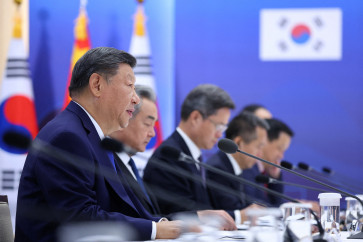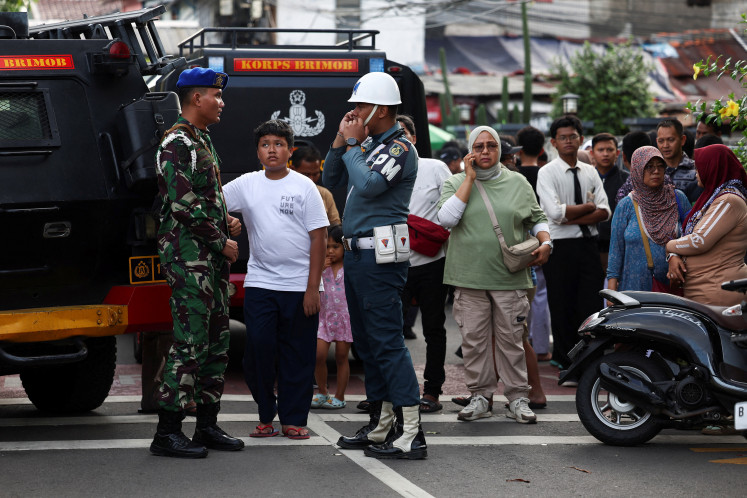Popular Reads
Top Results
Can't find what you're looking for?
View all search resultsPopular Reads
Top Results
Can't find what you're looking for?
View all search resultsRI to remain No. 1 palm-oil producer within next decade
Amid soaring global demand for palm oil, Indonesia is predicted to remain dominant as the world’s largest palm-oil producer within the next decade, on the back of its main rival Malaysia’s land scarcity and aging plantations, says a report by Rabobank
Change text size
Gift Premium Articles
to Anyone
A
mid soaring global demand for palm oil, Indonesia is predicted to remain dominant as the world’s largest palm-oil producer within the next decade, on the back of its main rival Malaysia’s land scarcity and aging plantations, says a report by Rabobank.
According to the report, average palm-oil consumption in the world has grown at a faster rate than global supplies over the last 10 years, reaching demand of 2.5 million tons per year compared to production of 2.4 million tons per year, putting pressure on palm-oil producers to intensify their output.
“Due to demand outweighing supply, constraints are now apparent,” said the report, titled: Palm Oil Outlook: Palm, the Leader of the Pack.
To meet global demand, palm-oil producers need to expand their plantations by 640,000 hectares of land per year. With that figure in mind, Indonesia’s land availability is expected to last for another 12 years, as it still has 16 million to 17 million hectares of land that can be used for oil palm plantations.
On the other hand, Malaysia had mostly exhausted its land supply, leaving the country with only 600,000 hectares of suitable land as of now, said Rabobank International’s associate director for food and agribusiness research and advice Pawan Kumar.
“Given the current land situation and the increasing regulatory, environmental and sustainability protocols, Malaysia may run out of suitable land for palm cultivation within three to four years,” he said during a press conference in Jakarta on Wednesday.
Besides land scarcity, Malaysia also faced the problem of aging plantations, with 87 percent of its total planted areas already matured. In comparison, only 76 percent of Indonesia’s total planted areas had reached maturity, indicating potential for future production growth in the country, suggested the report.
“The Malaysian plantation sector is relatively mature and there is very little land left for expansion,” the report said.
Rabobank’s corporate and investment banking director, Eri Budiono, also shared the same bright outlook for Indonesia as he predicted that the country could produce up to 55 percent of the world’s palm oil by 2020, up from 48 percent last year, due to its advantages.
But the US might not be among those palm-oil buyers in the future as the US Environmental Protection Agency (EPA) added Indonesia’s crude palm oil (CPO) to its imported commodities’ blacklist in January this year based on allegations that Indonesia’s CPO produces higher carbon emissions than the minimum level required by the EPA.
“But that doesn’t necessarily mean that Indonesia’s palm oil is of a lower quality than Malaysia’s. They are just better at image building and public relations than us, so the outside world has this misperception about the quality and sustainability of Indonesia’s palm oil,” Eri said.
Despite this, Indonesia has for the first time this year overtaken Malaysia as the world’s largest sustainable palm-oil producer due to its increased certified sustainable palm oil (CSPO) production.
Looking ahead, Indonesia’s palm-oil industry still faces many hurdles, however, in securing and developing land due to lack of infrastructure, land costs and complex social issues, according to the report. (han)










